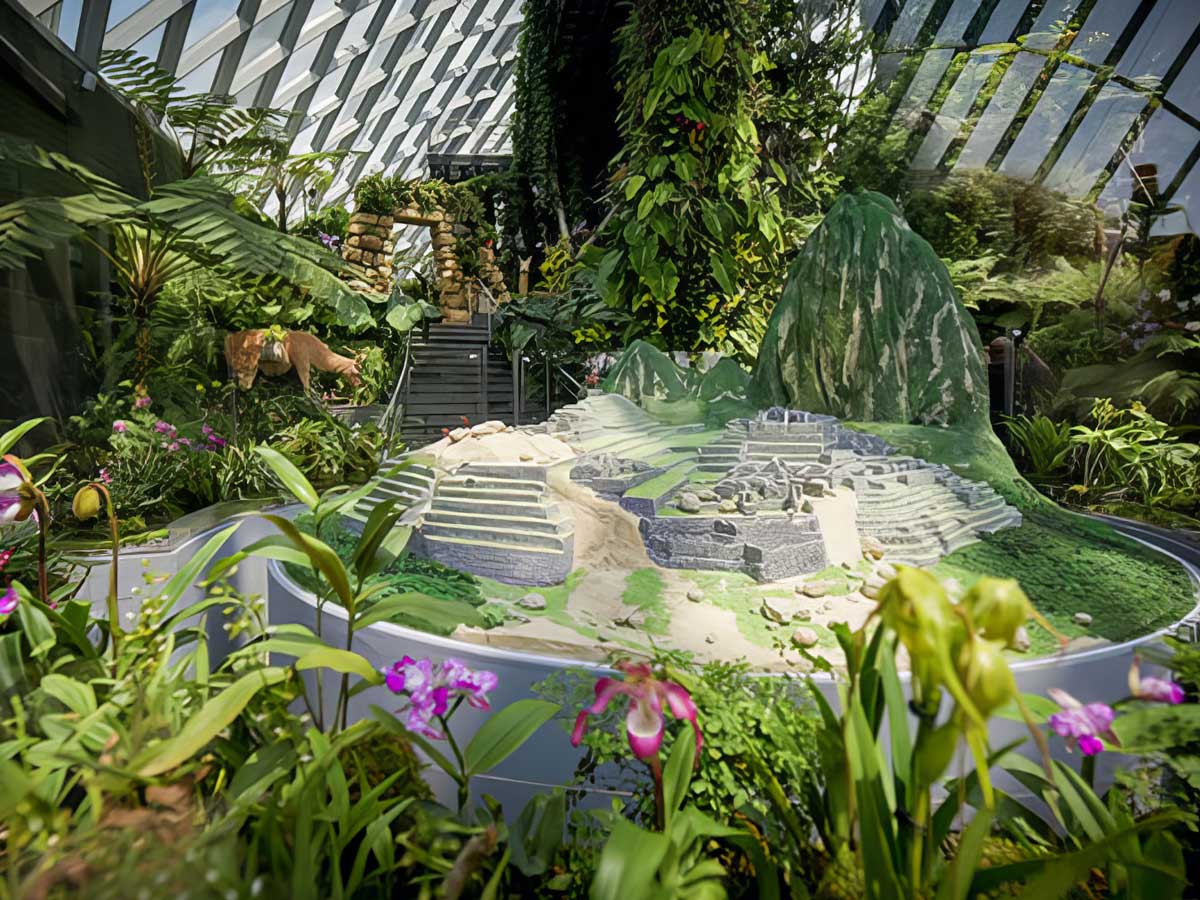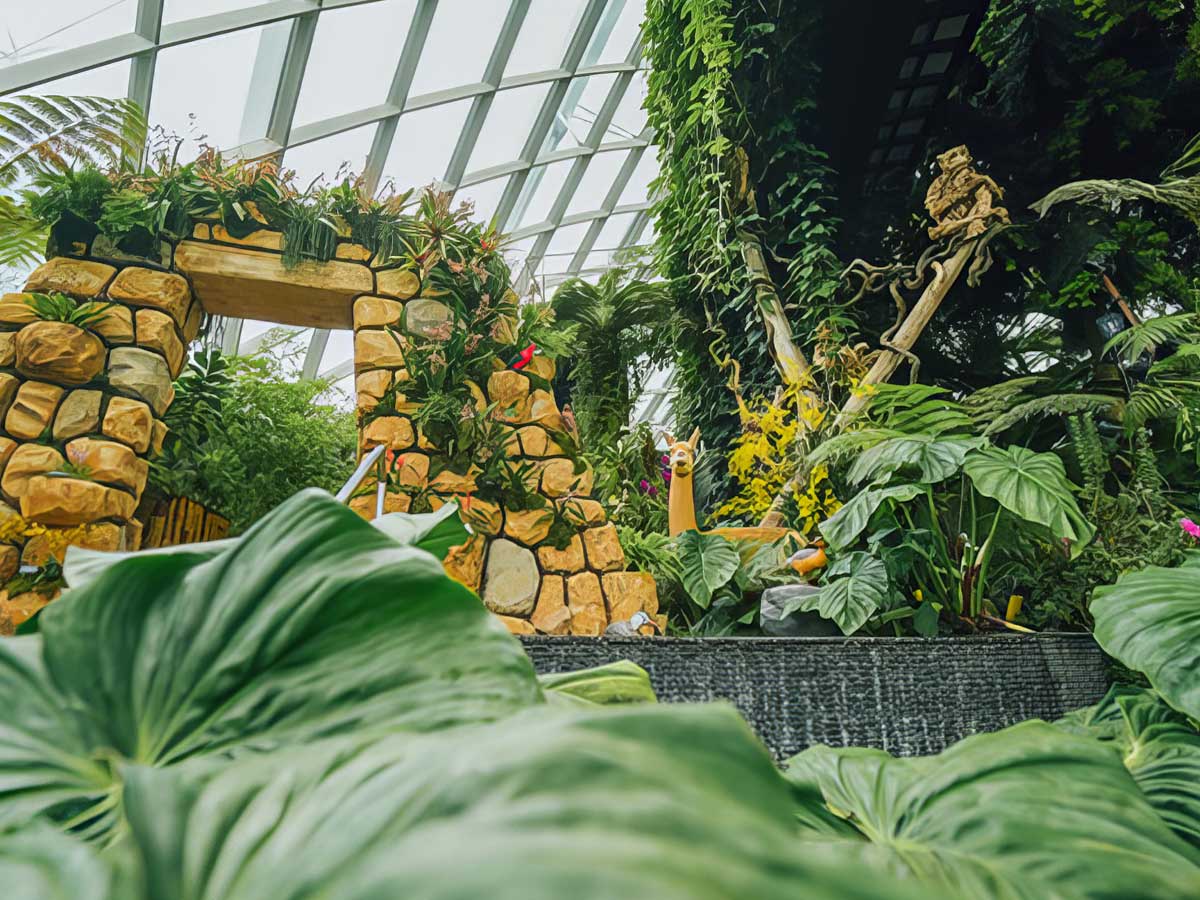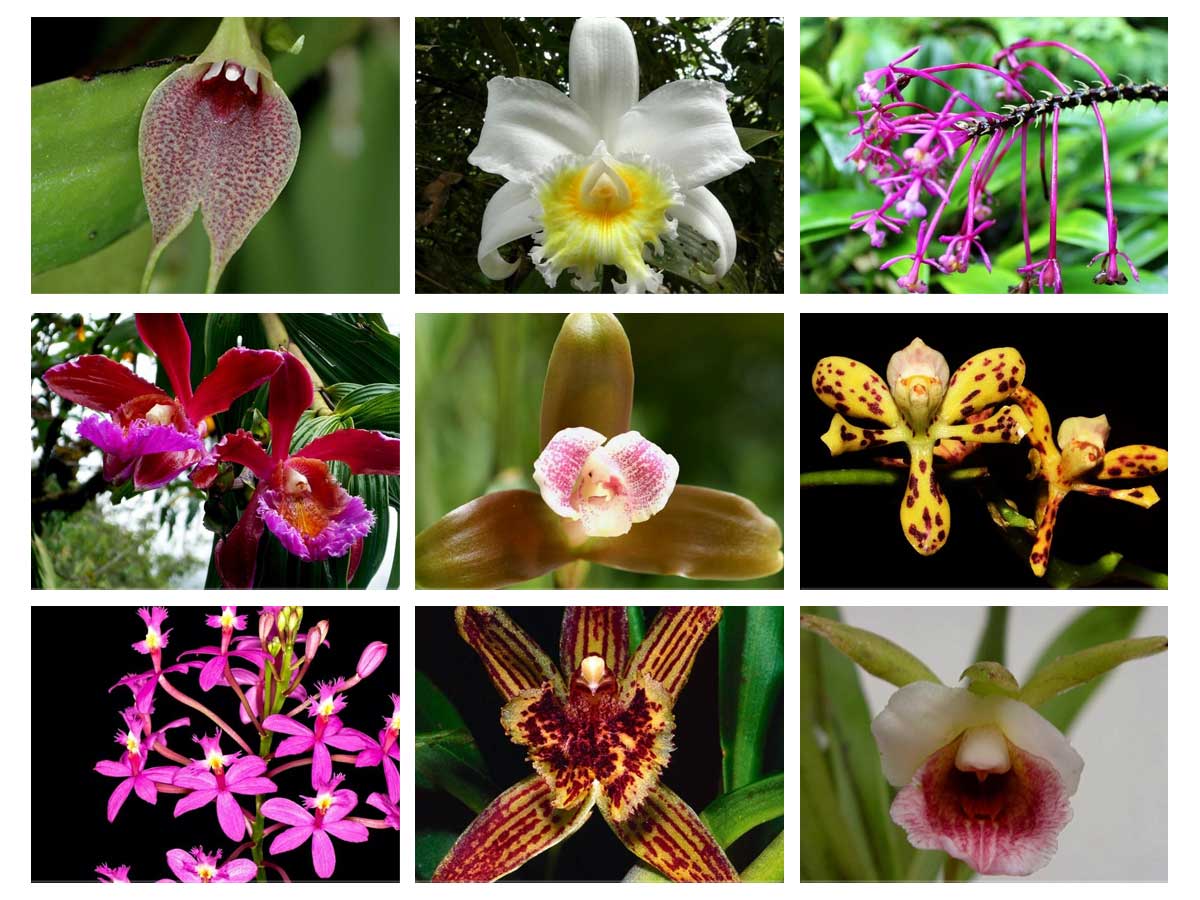
In the historic sanctuary of Machu Picchu there are more than 400 species of orchids, some of them native to this natural area protected by the State and several are new to science.
The singular beauty of these orchids constitutes one of the attractions to know the great biodiversity that the main tourist destination of Peru boasts and one of the seven wonders of the modern world.
Orchids were known to both pre-Inca and Inca cultures, and this is reflected in ceramics and textiles. In his work "Real Comments of the Incas" Garcilaso de la Vega gives an account of a beautiful flower called wiñay huayna, which in Quechua means "always young", which abounds in the Vilcanota river valley.
In 1942, the famous archaeologist Julio C. Tello named an archaeological complex within the historic sanctuary of Machu Picchu: Wiñay Hayna, due to the abundance of orchids.
The orchid family, called "Orchidaceae", is the most diverse of the group of flowering plants and represents between 25,000 and 35,000 species in the world, according to botanists. They range from tiny, moss-like plants to massive bushy bushy plants.
In Peru they are mostly found between 500 and 3,000 meters above sea level, especially in cloud forests. The historic sanctuary of Machu Picchu is rich in orchids. In its 38,448 hectares, 425 species are currently documented, although it is estimated that there would be 1,000 species.

The prestigious international magazine "Icones Orchidacearum" published in 2015 an article on the discovery of three new species unknown to science: "Epidendrum ochoar", "Epidendrum inca huamani" and "Epidendrum mormontoy".
These unpublished species were dedicated to the workers of the Decentralized Directorate of Culture of Cuzco: Gustavo Ochoa Estrada, biologist in charge of the Biocultural Conservation and Management Program of the Historic Sanctuary of Machu Picchu; Feliciano Inca Huamán Atausinchi, conservative watchman of the Llaqta de Machu Pichu, and Rolando Mormontoy López, conservative watchman of the Inca Trail of Machu Picchu.
Orchid flowers are generally hermaphroditic and bilaterally symmetrical. In the vast majority of genera, the flowers are formed by three external elements called sepals, two lateral and one dorsal, and three internal elements called petals, the lower one modified into a lip or labellum, larger and with a more intense color than the remaining.
The lip is often trilobed with fleshy ridges or a basal spur, and often with a totally different color pattern than the other two petals.
97% of orchid species need a pollinator for the transfer of pollen grains from one plant to the pistils of another, in order for fertilization and seed formation to take place. The pollen of the orchids is grouped in compact masses called pollinia, in such a way that by itself, or due to the action of the wind, the pollen cannot reach from one flower to another, so pollinators are essential to ensure their reproduction.

These pollinators are very varied and, depending on the species, they can be flies, mosquitoes, bees, wasps, butterflies, beetles and birds, especially hummingbirds, which are in charge of collaborating with the reproduction of this beautiful flower.
So beautiful that it gave rise to the Inca legend Waqanki. With beautiful petals in litmus; The great variability in the color and shape of its flowers means that no camera can capture it in all its splendor, being highly appreciated by growers around the world, which has earned it many international awards. Finding a beauty like this in its natural environment is part of the experience offered by the sanctuary of Machu Picchu. It develops between 2,100 and 3,310 meters of altitude, of terrestrial habit and rarely epiphyte. It is used a lot for the creation of hybrid species. It can measure up to 20 cm long by 6 cm wide.
This tiny species measures just 8 mm, its strange shape provides its name, which derives from the Greek meaning pointed tongue, it extends from Mexico to Brazil and Bolivia, it develops in rainforests and humid forests with temperatures from warm to cold, from sea ​​level up to 2,600 meters of altitude.
It is an epiphytic, medium, uniflora plant, like the tulip or magnolia, with 2.8 x 2.8 cm flowers. It can be perceived by its aroma similar to coriander. Its flowering lasts for 15 days. Discovered by the late gardener Moisés Quispe, (dragged by a huayco years ago) and can be found from sea level.
Epiphytic orchid that spreads through countries such as Ecuador, Colombia, Peru (Cusco and Cajamarca) and Bolivia, we can find it between 1,700 and 2,100 meters of altitude. So simply beautiful that it inspires peace. It is found in the humid subtropical jungle and the humid sub-tropical jungle of the sanctuary. It can be found in bouquets of up to a dozen, with a scent between jasmine and roses.
This little girl is found growing as an epiphyte and lithophyte, in Venezuela, Colombia, Ecuador, Peru (Amazonas, Cajamarca, Pasco, Cusco, Puno) and Bolivia. In the Historic Sanctuary of Machu Picchu it is found from 2,060 to 4,150 meters of altitude, it develops in humid mountainous forests, growing in the form of a vine.
Endemic to the Historic Sanctuary of Machu Picchu, it blooms between August and October, it is found from 1,500 to 3,600 meters of altitude, especially in cloud forests with cold climates, it presents long-stemmed bouquets of few flowers, of 5 cm. long by 4 cm. Wide.
Epiphytic plant from warm to cold areas, which extends from 500 to 2,400 meters of altitude, it is found in Peru and Bolivia, easy to find in the Historic Sanctuary of Machu Picchu. It develops in the humid subtropical forest and the humid sub-tropical premountain forest, it presents a single flower of about 10 cm. long, sprouting from the base of the plant simultaneously.
Variable in size with two to four lanceolate leaves. Formosa plant (presents spheroidal bulge), its flower varies from 4 to 5 cm. long, it has stems with about a dozen purple-pink to fuchsia flowers. The highest flowering is from January to February.
Epiphyte. Pseudobulbs: It has impressive bright yellow flowers with red-brown spots, they are 2 to 5 cm in size. long. Lip prominent, discoidal, unifoliate. Its flowering time goes from February to May.
Terrestrial and Epiphyte, with leathery leaves. Petals brownish-purple, large, some of them reach 20 to 80 cm. long. Two blooms a year have been reported, May, June and February. This is the largest orchid flower that exists.
Terrestrial, it has creamy red-brown speckled flowers with elongated pseudobulbs, two to three leaves; It has a size of 2 to 3 cm. long. The largest flowering is from November to April.
Epiphyte and terrestrial, quite smooth leathery leaves. With 1.5 cm long flowers, and creamy green to yellow on sepals and petals. Flowers from October to December.
Terrestrial, it is found in abundance in the sanctuary of Machu Picchu, the size of its flowers varies from 2 to 3 cm. long, it has an iridescent color that ranges from white to fuchsia. Its flowering is during almost the whole year. His native name is “Wiñaywayna” which in Quechua means “Eternally Young”. It gave its name to the current archaeological site of Wiñaywayna. Its leaves were used by the Incas as a symbol of nobility.
Basically terrestrial, plant with stems up to 5 m. High. It generates bouquets of 5-8 flowers, petals of fuchsia color; lip fuchsia and intense orange. Its flowers only last from 1 to 4 days, being a only momentary existence. Also known as the "Flower of Paradise". It is 6 to 8 cm in size. Wide. The highest flowering is from February to April.
Terrestrial and Epiphyte. Presents cavities, which give the sensation of grooves. Generally 2 to 3 leaves; flowers 6 to 9 cm. wide, dark brown sepals, petals and creamy white lip, its flowers are long lasting. Flowers from November to January.
Terrestrial, it has dark green pseudobulbs, ovoid, with two to three leaves. With a flower that measures 7 cm. long, white with purple-pink spots on the lip, sepals and petals. Flowers from October to November.
Epiphyte with lanceolate leaves. With 3 cm, semitransparent flowers, sepals and petals with reddish-brown lines. Flowers from September to October. A new species for science, discovered at the Machu Picchu Pueblo Hotel.
Clearly epiphytic. Short stem and oval leaves. It has a flower 4 cm long. Yellow-green sepals and yellow petals, with purple veins. Column with purple brown mushrooms. Flowers from April to June.
Epiphyte or lithophyte. Sepals light purple to pale pink with purple spots. Large leathery leaves, up to 12 cm. long, white petals, with a flower that measures approximately 7 cm. long. New species for science. Flowers from December to January.
Epiphyte. Inflorescence flattened, in racemes, acuminate linear leaves. It has a flower up to 2 cm long. Sepals and yellow petals. Yellow lip with purple veins. Its flowering stage goes from January to February.
Epiphyte with cylindrical pseudobulbs, unifoliate leathery. With flowers up to 2 cm, with purple-pink to fuchsia sepals, petals and lip (with a noticeable spur). Flowers from December to March.
Epiphyte. Leaves with prominent petiole, uniflora. With flowers of 6 to 7 cm. long; Whitish sepals with red-purple dots and veins. This species is new to science. It has beautiful white petals.

2 Day Train Tour to Machu Picchu
Sacred Valley and Machu Picchu 2 Day Tour
Classic Inca Trail Tour (4 Days/3 Nights)